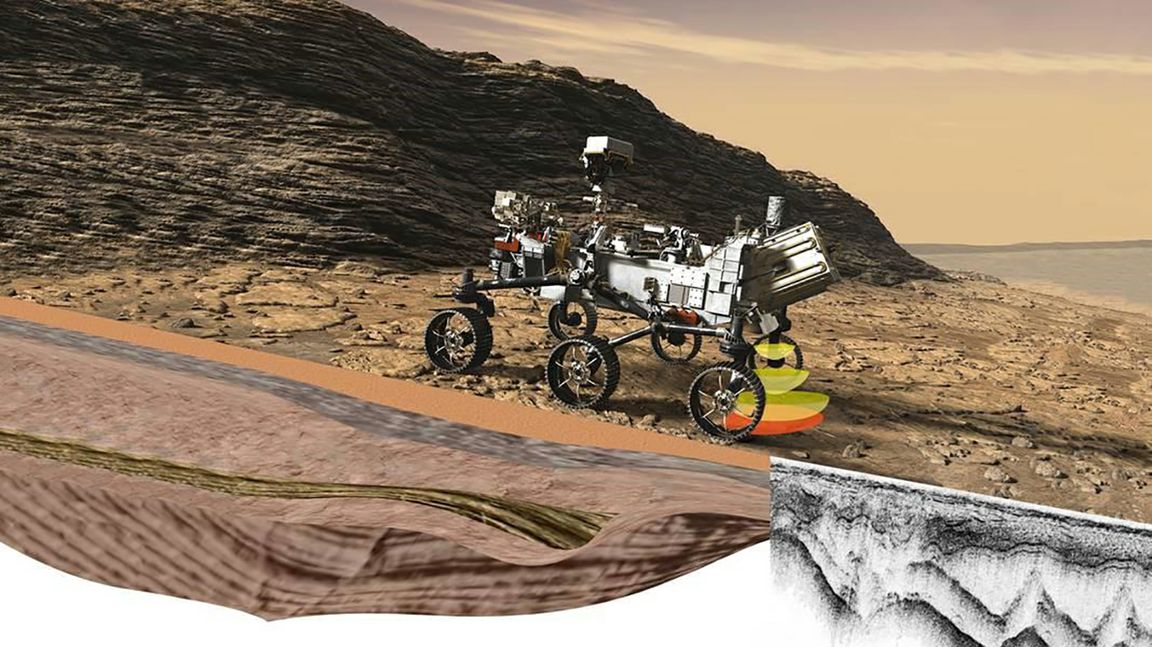Image Credit: NASA/JPL/Caltech/FFI. Rendering of the NASA Perseverance. The rover’s RIMFAX technology will use radar waves to probe the unexplored world that lies beneath the Martian surface.
Q&A: David Paige on the Feb. 18 Mars Perseverance landing
The UCLA planetary scientist is deputy principal investigator for one of the NASA rover’s experiments
Stuart Wolpert | February 16, 2021
Read Full Story: https://newsroom.ucla.edu/releases/mars-perseverance-nasa-rover-david-paige
NASA’s Perseverance rover is scheduled to land on Mars on Feb. 18 after a six-and-a-half month flight. Over the next two years, it will explore Jezero Crater, which is in Mars’ northern hemisphere, for signs of ancient life and for new clues about the planet’s climate and geology.
Among other tasks, it will collect rock and soil samples in tubes that a later spacecraft will bring back to Earth, and the experiments will lay the groundwork for future human and robotic exploration of Mars.
Perseverance, which is about the size of a car, is outfitted with seven different instruments, including the Radar Imager for Mars‘ Subsurface Experiment, or RIMFAX. RIMFAX will probe beneath the planet’s surface to study its geology in detail, and its deputy principal investigator is David Paige, a UCLA Professor of Planetary Science.
Mark Nasielski, a UCLA graduate student in electrical engineering, is part of the operations team. Max Parks and Tyler Powell, graduate students in EPSS, are part of the science team.
In an email interview with UCLA Newsroom, Paige discussed his hopes for the mission.
Read Full Story: https://newsroom.ucla.edu/releases/mars-perseverance-nasa-rover-david-paige

